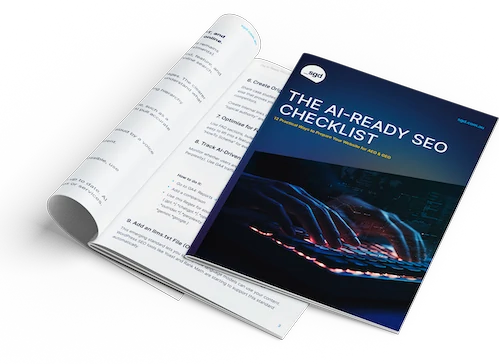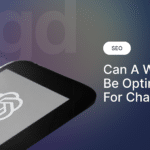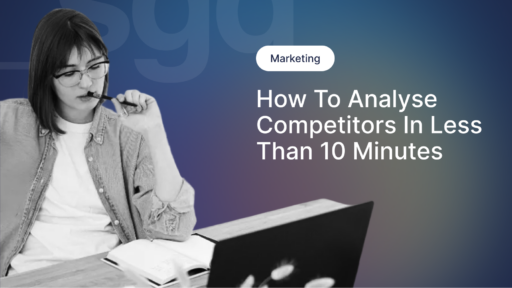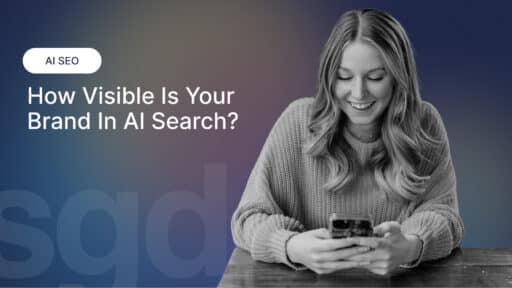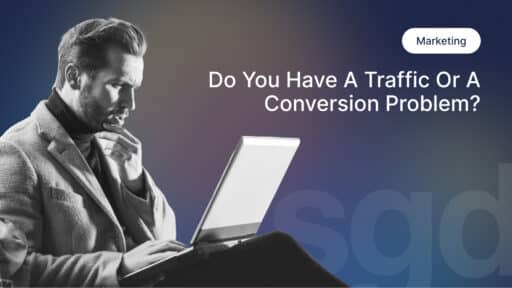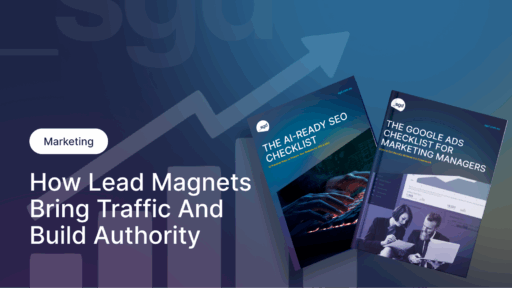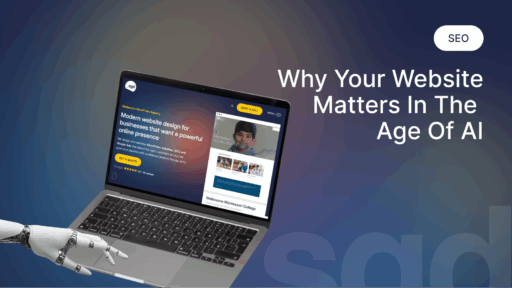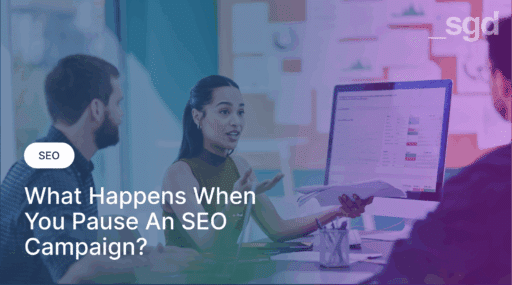How to Nail Your Website Messaging
Learn how to craft effective website messaging with strategies like clear headlines, benefit-focused copy & frameworks like AIDA. Make your message count!

Written by: Simon Kelly
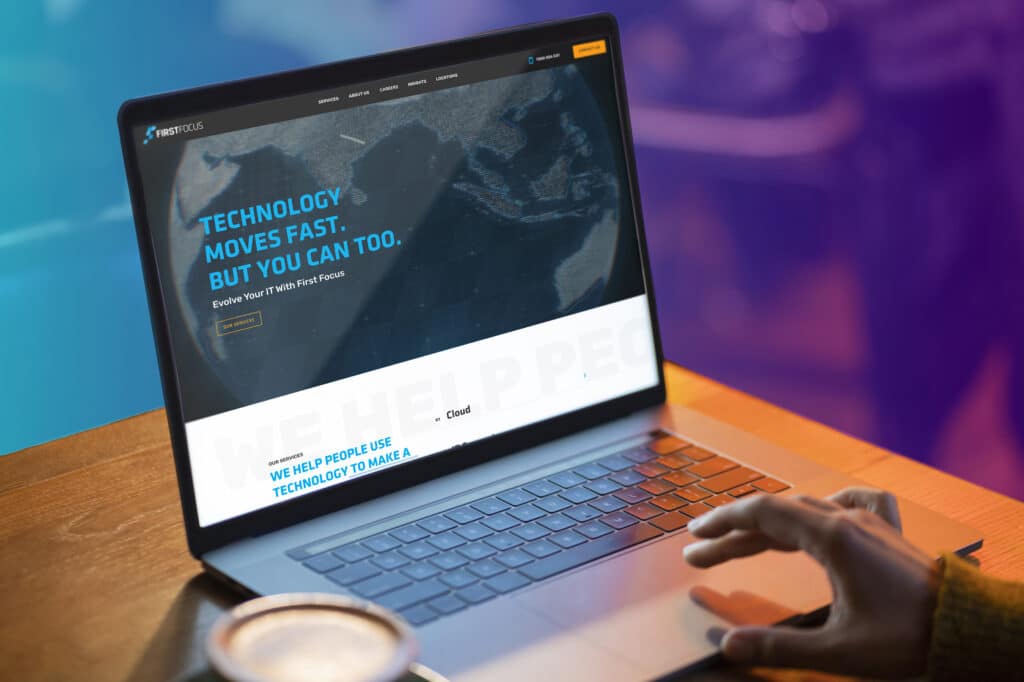
Messaging is everywhere.
Every ad, social post, and email you see is competing for one thing– attention.
Your potential customers are flooded with these messages every day, scrolling past them in seconds without a second thought. It’s noisy, cluttered, and overwhelming. So, how do you break through and get noticed?
It starts with understanding that messaging isn’t just words on a screen. It’s the story you tell about your business.
Done poorly, it can cost you– lost leads, missed sales, and a stalled business.
But done well?
Messaging can become your biggest asset.
It can capture attention, build trust, and create lasting loyalty.
Think of your message as your greatest salesperson. It works 24/7.
It doesn’t sleep. It doesn’t need a break.
It can reach thousands– even millions– of people at scale.
But it can only work if it’s crafted to connect.
And that means getting crystal clear on who you’re talking to, what they need, and how you solve their problem.
This isn’t about being clever or flashy. In fact, the flashiest messaging often fails. The key is clarity and relevance.
The kind that makes your audience stop scrolling and say, “Yes! This is exactly what I need.”
Our CEO & Head of Growth, Simon Kelly, recently held a webinar, How to Nail Your Website Messaging, where he covered the basics of messaging, why it matters, and how to improve your own. Watch the full replay or read our blog to discover some of his key points.
In this guide, we’ll explore the building blocks of effective website messaging as told by our website and SEO Melbourne team– how to structure your page to maximise conversions, write headlines that hook, and turn boring features into irresistible benefits.
These strategies will help you not just compete but thrive.
Learn how to cut through the noise. Because your message deserves to be heard!
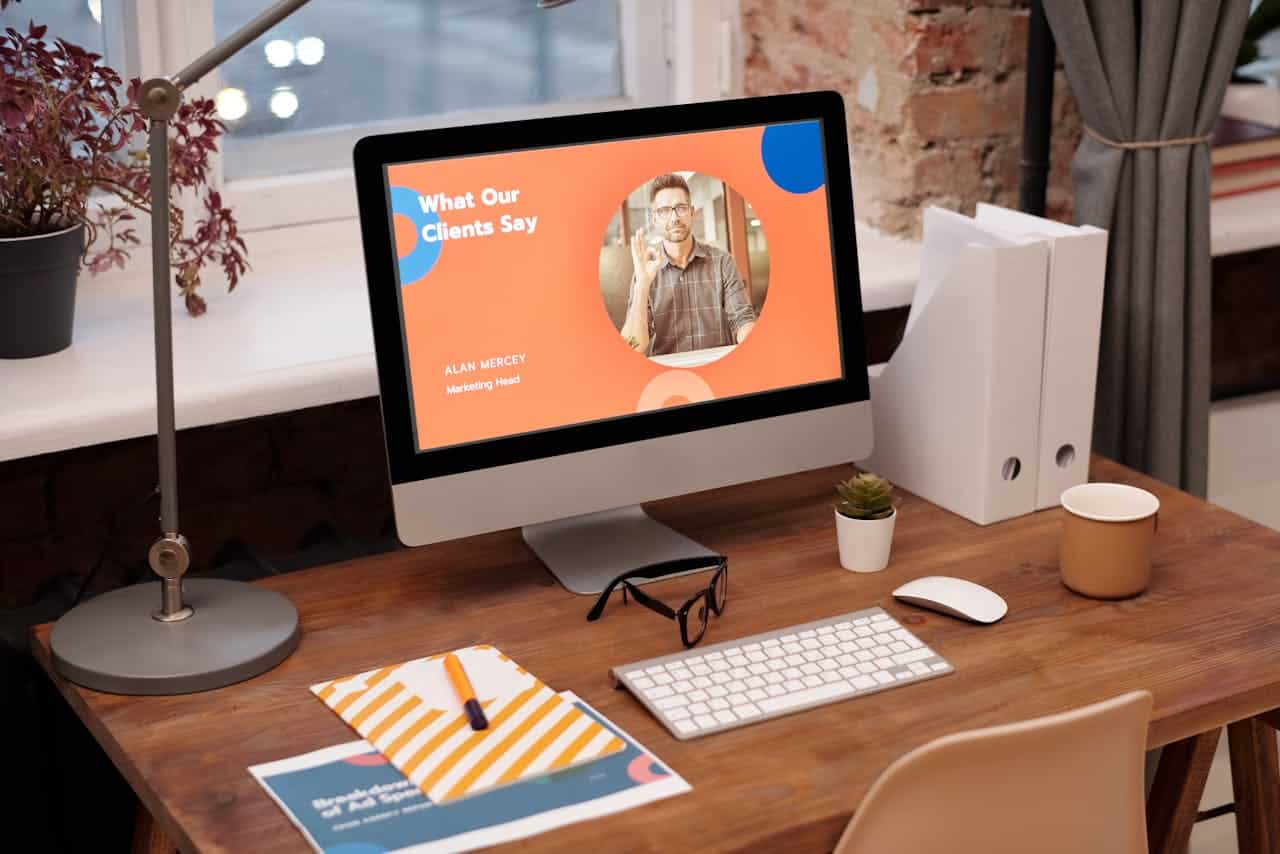
Crafting a web page that converts: structure matters
Imagine landing on a website that immediately grabs your attention, speaks to your needs, and guides you seamlessly towards taking action.
That’s the power of a well-structured web page.
But too many websites fail at this.
They’re cluttered, confusing, and focused on the business rather than the customer.
To create a page that connects and converts, you need to understand your audience and build a page structure that serves them.
Think of your website as a conversation with your visitors– if you don’t engage them quickly, they’ll leave without saying a word.
Here’s how to structure your page to guide them from curiosity to commitment.
1. Headline above the fold: grab their attention
The first thing your visitor sees is your headline, and you only have seconds to hook them.
This headline needs to be clear, benefit-driven, and designed to spark interest.
- Focus on outcomes: Instead of talking about your business, highlight the result your customer can achieve.
Example: Instead of “we provide financial services,” try “retire early with a smarter investment plan.” - Keep it short and impactful. The goal is to make visitors want to keep scrolling.
This is your attention-grabber– if you don’t nail this, the rest of the page won’t matter.
2. Address the problem: show empathy
Your customer is on your site because they have a problem. Show that you understand it.
This isn’t about fearmongering or exaggeration; it’s about meeting your visitors where they are.
- Identify a pain point that resonates.
Example: “tired of chasing leads that go nowhere? you’re not alone.” - Keep it conversational and relatable. Your goal is to create an emotional connection.
When customers feel understood, they’re more likely to trust that you have the solution.
3. Introduce the solution: be clear and confident
Now that you’ve shown empathy, it’s time to explain how you can help. Be clear, concise, and confident in presenting your offer.
- Don’t drown them in details: Focus on the core benefit first. What’s the primary way you solve their problem?
- Answer their internal questions: Why should they trust you? What makes your solution better?
Think of this as the “interest” and “desire” phase in the AIDA framework (more on that in the section below).
4. Build trust: use social proof
People don’t want to be the first to try something new– they want reassurance that others have benefited from your solution.
This is where trust signals come in.
- Use testimonials: Highlight quotes from satisfied customers.
- Share statistics: For example, “over 10,000 happy customers” or “rated 5 stars on Google.”
- Mention credentials: Awards, certifications, or high-profile partnerships help build credibility.
Trust isn’t built overnight, but these signals can help nudge sceptical visitors in the right direction.
5. Simplify the next steps: a three-step framework
Many visitors leave a website because they don’t know what to do next. Make it simple by outlining a clear, three-step process.
Example…
- Schedule a free consultation.
- Receive a custom growth plan.
- See measurable results in 30 days.
Breaking the process down into three steps helps reduce decision fatigue. It makes the path to action feel manageable and achievable.
The importance of iteration
Even with the right structure, perfection isn’t the goal. Messaging is a living, breathing part of your business. Start with a strong foundation, then test and tweak based on how users interact with your site.
Your competitors are iterating, and so should you. Regular updates ensure your messaging stays relevant, effective, and aligned with your audience’s changing needs.
By mastering these elements of web page structure, you can create messaging that not only holds attention but also drives meaningful action. Remember: your message needs to work for your visitor first and foremost. It’s not about you– it’s about solving their problem. Get that right, and you’re already ahead of the competition.

Compelling headlines: be clear before you’re clever
Your headline is your first and best chance to grab a visitor’s attention. It’s arguably the most critical part of your messaging because if you don’t hook them here, the rest of your page may never get read.
The biggest mistake businesses make? Trying to be too clever. A headline with fancy wordplay or jargon can confuse your visitor instead of intriguing them. Clarity always wins.
Why clarity matters more than cleverness
Your headline should tell visitors exactly what your business offers or how you can solve their problem. They don’t want to waste time figuring out what you mean. Think of it this way: your audience is scrolling quickly, and your headline needs to tell them in an instant why they should keep reading.
- Example of poor clarity: “Transforming dreams with innovation.” (This could mean anything!)
- Example of clear messaging: “Launch a high-converting website in just 4 weeks.”
Once your visitor understands the core message, they are more likely to stay and engage.
How to create a compelling headline
Start by thinking about the main benefit your customer is looking for. Are they trying to save time, cut costs, increase sales, or improve their quality of life? Your headline should highlight this result.
- Focus on benefits: People want to know what’s in it for them.
- Keep it simple: Shorter headlines are easier to process quickly.
Don’t be afraid to write multiple headline variations before you settle on the final one. We suggest writing at least 10–20 options to explore different angles and ideas.
Test and iterate your headlines
Even the best marketers don’t always know which headline will resonate most. Testing your headlines is a smart way to find out. One simple method is to run small ad campaigns with different versions of your headline and see which gets the most clicks or engagement.
This approach allows you to collect real-world data and refine your messaging over time, ensuring it connects with your audience.
The takeaway? Be clear, be concise, and don’t overthink it. A strong, benefit-focused headline is your gateway to a successful website.
Features vs benefits: focus on what your customer gains
Businesses often fall into the trap of focusing on features– listing the technical specs, capabilities, or processes behind their product or service. But here’s the reality: most customers don’t care about features.
What they care about is the outcome– how your product or service will improve their life, solve their problem, or help them achieve a goal.
What’s the difference between features and benefits?
A feature is a factual statement about your product or service.
A benefit explains what that feature does for the customer.
Example
- Feature: Our software automates data backups.
- Benefit: Our software automates data backups, so you never have to worry about losing critical files.
Notice the key phrase here: “so you can…”. This simple linking phrase helps shift your message from features to customer-focused benefits.
Apple demonstrated this perfectly with the iPod. Instead of advertising “1GB of storage,” they sold it as “1,000 songs in your pocket,” turning a dry technical feature into a compelling benefit.
How to turn features into benefits
For every feature you list, ask yourself: “Why does this matter to my customer?” Keep drilling down until you get to the core benefit.
Here’s a quick exercise:
- Write down a feature of your product or service.
- Add “so you can…” at the end and finish the sentence with a benefit.
- Repeat this process to uncover multiple benefits.
Example
- Feature: Lightweight collapsible shopping cart.
- Benefit: A lightweight collapsible shopping cart, so you can carry your groceries in one trip without breaking a sweat.
Iterate and refine your messaging
As with headlines, perfection isn’t the goal. The key is to continuously test and improve. Ask your customers what benefits resonate most with them, look at reviews for common themes, and monitor your competitors’ messaging.
Remember, your business doesn’t operate in a vacuum. Customers compare your offer to alternatives and even the option of doing nothing. Your benefits need to stand out, be relatable, and clearly communicate why your solution is worth their attention.
When you master the art of benefit-focused messaging, you’re no longer just describing your product– you’re helping your customers envision a better version of their life.
Proven frameworks: using AIDA to guide your audience
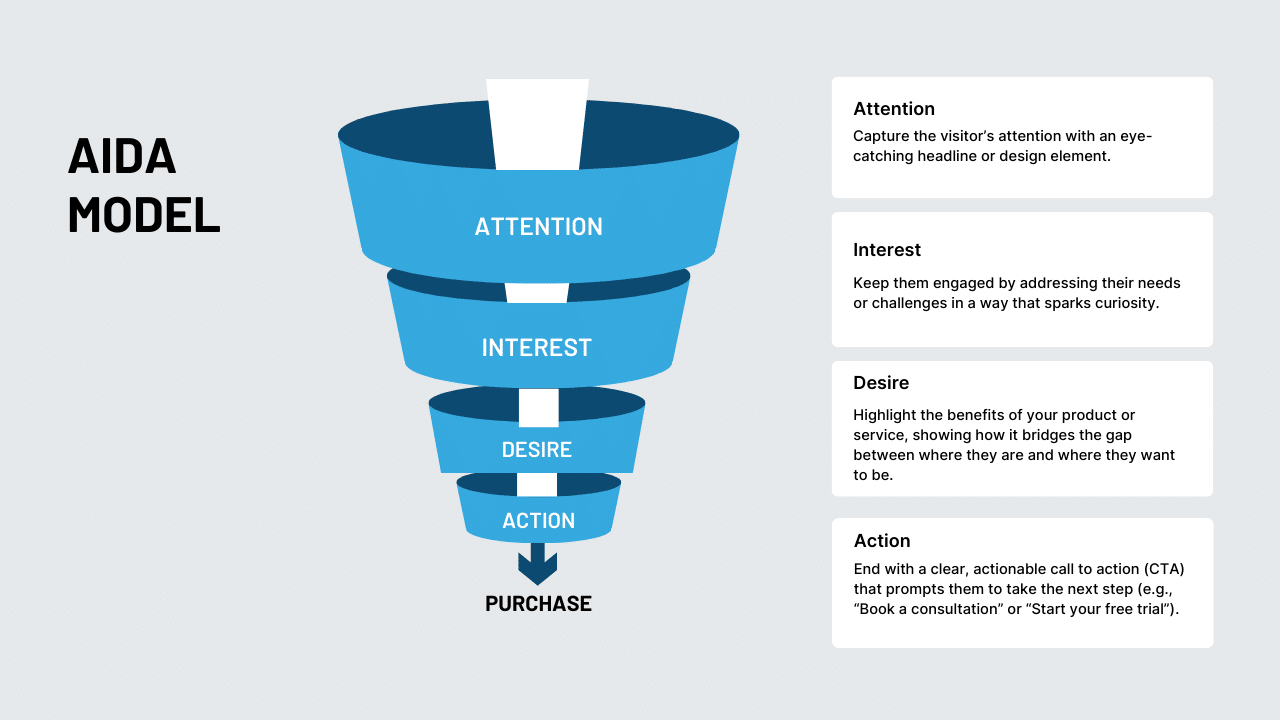
When it comes to effective website messaging, structure and strategy are essential. One powerful and time-tested framework for guiding visitors from interest to action is AIDA. It stands for:
- Attention: Capture the visitor’s attention with an eye-catching headline or design element.
- Interest: Keep them engaged by addressing their needs or challenges in a way that sparks curiosity.
- Desire: Highlight the benefits of your product or service, showing how it bridges the gap between where they are and where they want to be.
- Action: End with a clear, actionable call to action (CTA) that prompts them to take the next step (e.g., “Book a consultation” or “Start your free trial”).
Why AIDA works
AIDA taps into basic human psychology. We are naturally drawn to content that grabs our attention, promises a solution to our problems, and guides us toward achieving a better outcome. This method has stood the test of time because it aligns with how people process information and make buying decisions.
Whether you’re writing a landing page, an email, or even a social media ad, the AIDA framework ensures your messaging stays customer-focused and conversion-driven.
Recommended tools and resources
To help craft clear and effective messaging, tools like StoryBrand’s framework and headline testing methods can provide valuable insights. StoryBrand’s tool helps you build a brand script, clarifying how to position your business as a guide for your customer’s success.
Additionally, running small ad tests to evaluate headline variations can reveal what resonates most with your audience. Regularly revisiting tools that provide data on customer behaviour, engagement, and feedback will support the continuous refinement of your messaging strategy.
It’s time to make your messaging work for you
Messaging doesn’t need to be flashy or complex to succeed. It needs to be clear, relatable, and focused on your customer’s needs. Poor messaging can cost you leads and sales, but strong messaging will help your business stand out and scale.
To get there, build your web pages with intention: craft headlines that grab attention, highlight benefits over features, and guide users with frameworks like AIDA. Keep refining through testing and feedback.
Remember, small improvements in messaging can drive big results. Make every word count!
Need more support with messaging? The SGD team are here to help.
